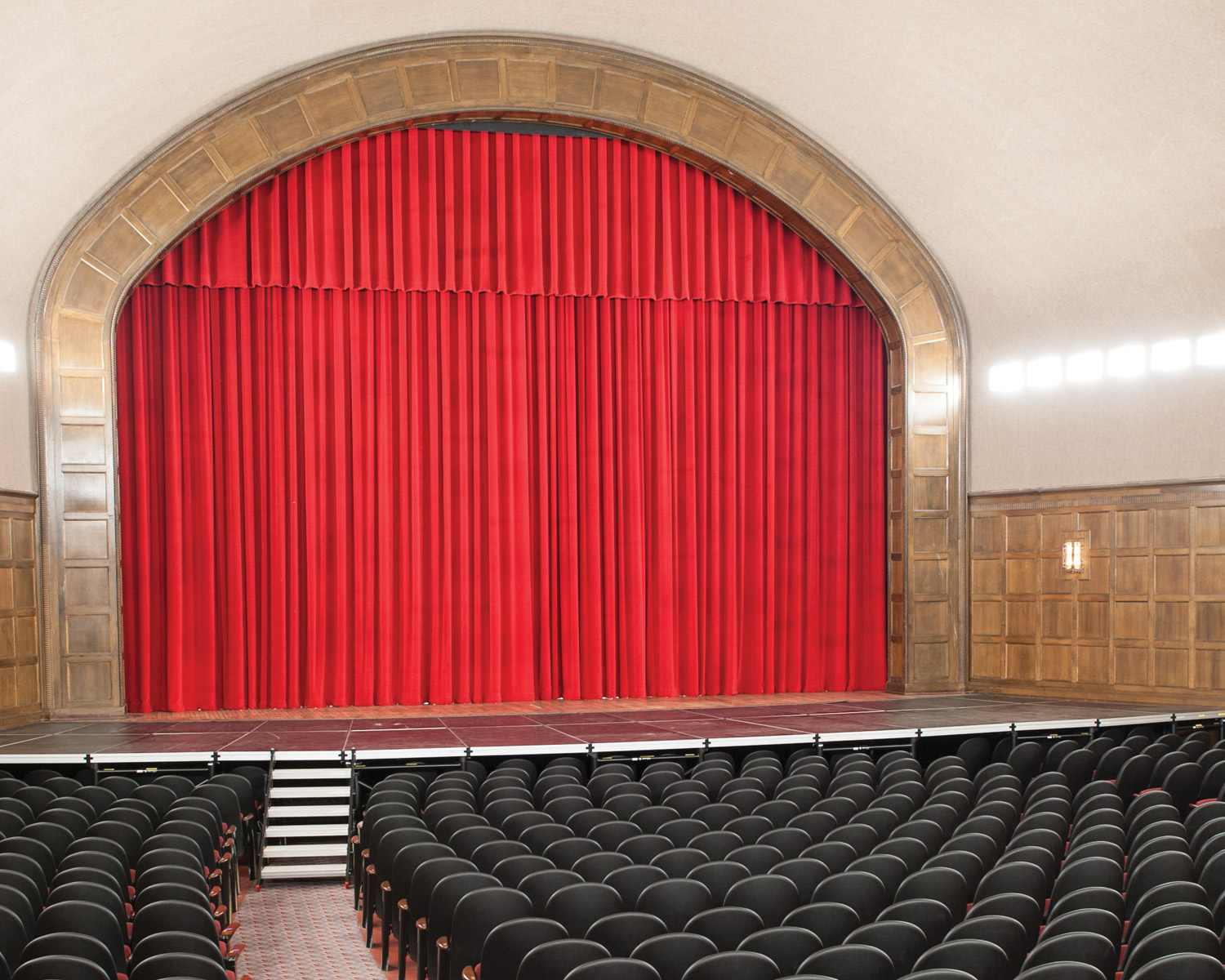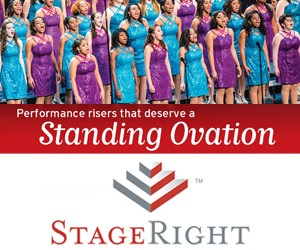
The easiest option is to extend the stage with either a stage extension,or if you have an orchestra pit, to fill it with platforms. If the decision is made to move forward with the project, it is important that you stop and consider some of the following points.
Getting Started
Most performing arts facilities are occupied by multiple users. Meeting with the other users of the space to determine and agree on what the primary needs are is a great first step. You may share the space with the band, orchestra, dance, drama, or other choir groups. Working as a team to collaborate and come to agreement on what the top priority needs of the group are is a very important first step prior to contacting a manufacturer of staging.
A few questions will immediately come up and will need to be addressed before starting the project. They can include the following concerns:
- Should the stage extension/pit filler be just at the existing stage height or should it also set up at audience level and orchestra level?
- When set at stage height will you need a spanning or bridging design which offers clear space under the decking for the orchestra or for storage of equipment, pianos or instruments?
- How will the conductor view the orchestra and the performers on stage during a musical performance?
- If you also want the decking set at audience level, will you be wanting chairs mounted in that space in order to increase seating capacity up close to the stage?
- What other configurations or uses for the equipment do you have? Some systems will allow you to make risers from the same decking but using different height supplemental supports.
- Who will set up and take down the equipment, where will it be stored, and what weight capacity will it need to support?
- Are you anticipating the need for grand pianos, lifts, heavy scenery elements or large numbers of moving performers?
- Who is paying, what is your budget and what is your ideal timeline for completion of the project?
Expect it to take some time with multiple meetings before consensus regarding all these important considerations is reached. Once you have discerned the needs of the facility, then you should contact some professional staging manufacturers to help guide you. This is an important step to insure that you will get an engineered system that is developed for the application and fits the constraints of your facility. This is not an area that you want to try and build on your own as many risks are involved in doing so.
Design Process and Construction Considerations
The design priority is that these modular units be extremely strong and safe in order to withstand the live loads and action performed on them by a large quantity of enthusiastic performers. Safety, meeting code, ease of use, versatility, quietness, and stability of the platforms, as well as how they store, are all important considerations to weigh out. Be prepared to share a lot of information with the staging company including the ideal scope of the project and all of the needs you outlined as a user group. You will need to share dimensions such as width, depth, and height needed. It is good to have as many details, drawings, and photos to send to the staging company as you can get your hands on. The more detail the better!
Once you a re ready to move forward, you should contact several staging companies. A minimum of three different bids should be sought to make sure all aspects from budget to the design you developed are met.
Most staging companies can typically generate a professional design layout, equipment list, and quote within a few days. Ask for lots of photos, specs, and support materials.
It’s also great to get references and testimonials from other customers to help make your decision. Price should not be the only consideration, especially when taking into account that you will live with this system for many years; you want to get the best match for your needs.
Equipment Options
There are many options for equipment type and materials that can be used to build the system. The staging company will be able to help build a system that will function safely at the needed height and required configurations.
The performance surface can be made to fit your event needs or to match your main stage to give it a permanent look. Another consideration should be that the platform is quiet for the performers and will not be distracting when they transition from the main stage to the extension. The system should be designed in a way that all of the components work together to provide a stable area for your dancers, actors or the orchestra.
Having a stage that has platforms that bridge together and supports that have cross bracing is not only an option but a must-have if your stages are higher than sixteen inches. Certainly, the staging manufacturer should provide a stage that will meet the building and fire code standards as an integral part of the design and construction. Installation and training by the manufacturer is important to ensure all the components fit and function perfectly and your set up crew is trained in the proper safe use of the equipment.
Once you have selected a professional staging company and communicated all of your needs, you can go back and focus on your upcoming show knowing that they will deliver a worry free system for your performances for years to come.











